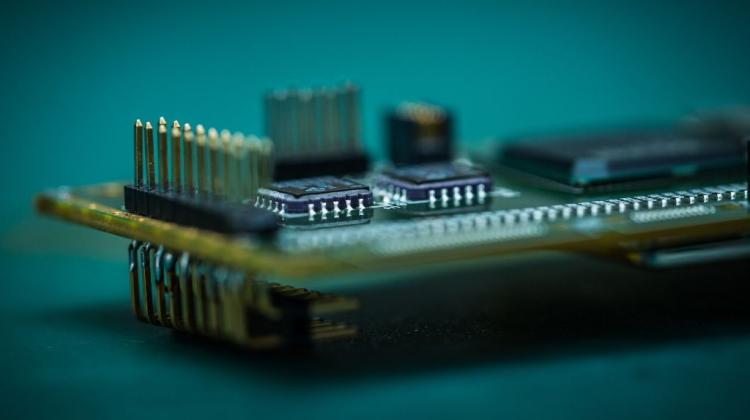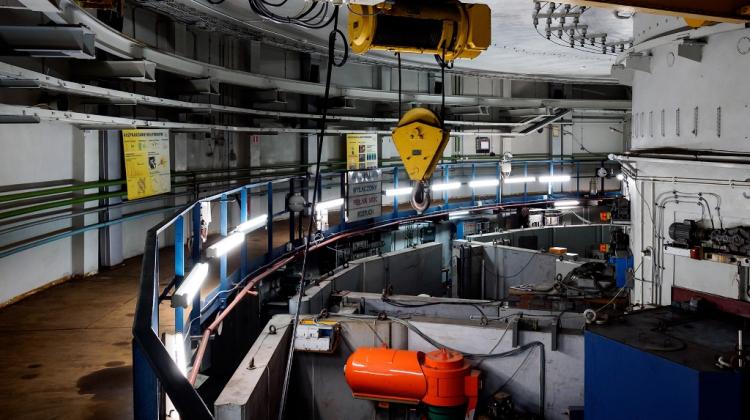Polish devices flew into space with a Chinese orbital module

Chinese orbital module Tiangong-2 was launched into space on September 15. On board are some scientific experiments - including the POLAR detector, parts of which have been prepared by Polish scientists.
On September 15, a rocket launched from the Jiuquan Satellite Launch Center in China carried the new Chinese orbital module Tiangong-2 (TG-2) into orbit. For now, there are no astronauts on board - they will arrive at a later time on manned spacecraft Shenzhou 11. But even before that, some experiments will be conducted remotely on the module. One of several such experiments to be conducted on board Tiangong-2 is the POLAR project, in the preparation of which Polish scientists took part.
Chinese-Swiss-Polish project POLAR will allow to better investigate gamma-ray bursts - evidence of the strongest explosions in the universe. Gamma-ray bursts can not be seen with the naked eye - the radiation frequency is even higher than X-rays - but they can be observed with appropriate sensors. A burst is recorded from Earth on average once a day. Sometimes a gamma-ray burst lasts a second, sometimes even a few minutes, and sometimes even longer. It is estimated, however, that the amount released energy is such a burst is as much as the Sun releases throughout its existence.
Gamma-ray bursts are known since the 1960s, and it is still not clear how they arise. It is hoped that the project POLAR will confirm or overturn some hypotheses on this subject. Prof. Agnieszka Pollo from the National Centre for Nuclear Research said in an interview with PAP that according to some hypotheses the source of gamma-ray bursts may be hypernova explosions or, for example, collisions of neutron stars with black holes.
But to understand the precise mechanism, many additional observations are needed. The project POLAR is designed to study a property of photons released during gamma-ray bursts - their polarity. "It would be a breakthrough if it turned out, for example, that the light of bursts is not polarized at all" - said Jacek Szabelski from the National Centre for Nuclear Research. But the problem with the measurement of gamma ray bursts radiation, however, it that they can only be studied from orbit - there it is not dispersed by the Earth\'s atmosphere.
The gamma radiation polarization detector was created in cooperation between the teams in China (Institute of High Energy Physics), Switzerland (INTEGRAL Science Data Centre, DPNC at the University of Geneva, Paul Scherrer Institut) and Poland (National Centre for Nuclear Research). The device could fit in the trunk of a car. Part of the detector built by Polish and Swiss scientists, is installed on the outer wall of the Tiangong-2 module and directed toward the zenith. It will collect information from one third of the visible part of the sky. The detector consists of 1600 elongated rods of plastic material, arranged on the top of a square. They collect data from which information about the polarization of gamma-ray bursts can be extracted. Data will be collected automatically (astronauts are not needed to operate the device) and transmitted to Earth twice a day.
"I built a trigger and its software for this device. This part will decide whether there was an interesting event, and whether it is worth to record any specific information and transmit it to Earth" - said in an interview with PAP Dominik Rybka from the National Centre for Nuclear Research and the Paul Scherrer Institut. Dr. Szabelski\'s team designed the prototype models of high-voltage power supply used in the detector.
Poles were involved in all phases of the detector tests carried out in France, the Netherlands, Switzerland and Italy. "Devices that are sent into space must be reliable. There is no possibility of servicing them later, after all. It has to be made to work even after it breaks" - laughed Dr. Szabelski.
Dominik Rybka mentioned that all part of the detector must withstand extreme conditions: violent shocks, high load factor, high and low temperatures, and high doses of radiation. In addition, heat dissipation is also important in all devices that operate in a vacuum - in a vacuum devices are cooled by ambient air. "In space, a curling iron would simply explode" - gave the example Dr. Szabelski.
The module Tiangong-2 (on which POLAR is installed) - in Chinese "Heavenly Palace 2" - does not have the size of a palace. It is shaped like a cylinder with a length of several meters and a diameter of a few meters. It is not designed for extended presence of astronauts (unlike the International Space Station ISS). It is anticipated that a manned mission - two astronauts - will spend around one month on board. The astronauts - as planned - will reach the Tiangong-2 perhaps still in 2016.
Tiangong-2 is the second Chinese space module. The first - Tiangong-1 - was launched into orbit in September 2011. The module was used to test the latest space technologies. In June 2012, three Chinese astronauts arrived at the station and spent approx. 10 days there. During another mission, a year later, another team of astronauts stayed at the station for 15 days. After the completion of their mission the station went into sleep mode, and in February 2016 the transmission of data from the experiments was completed. At the turn of 2016 and 2017, Tiangong-1 is to be deorbited - it will enter the atmosphere and burn.
PAP - Science and Scholarship in Poland, Ludwika Tomala
lt/ mrt/
tr. RL
Przed dodaniem komentarza prosimy o zapoznanie z Regulaminem forum serwisu Nauka w Polsce.


















